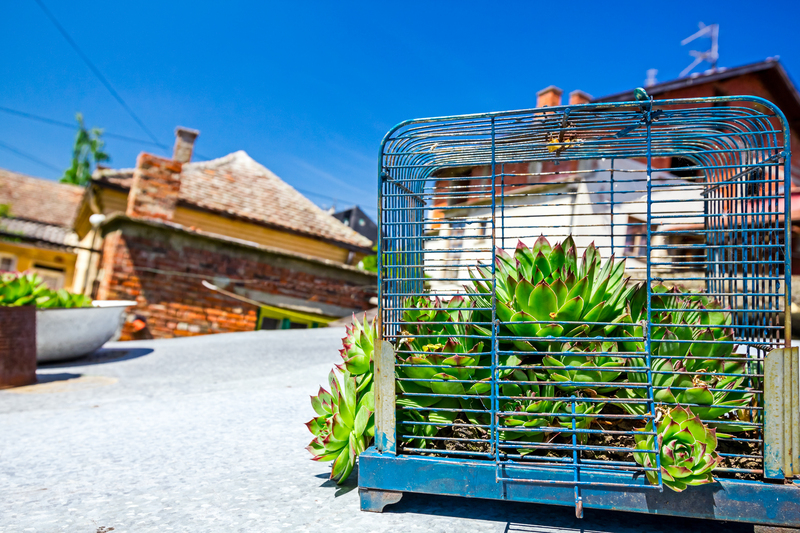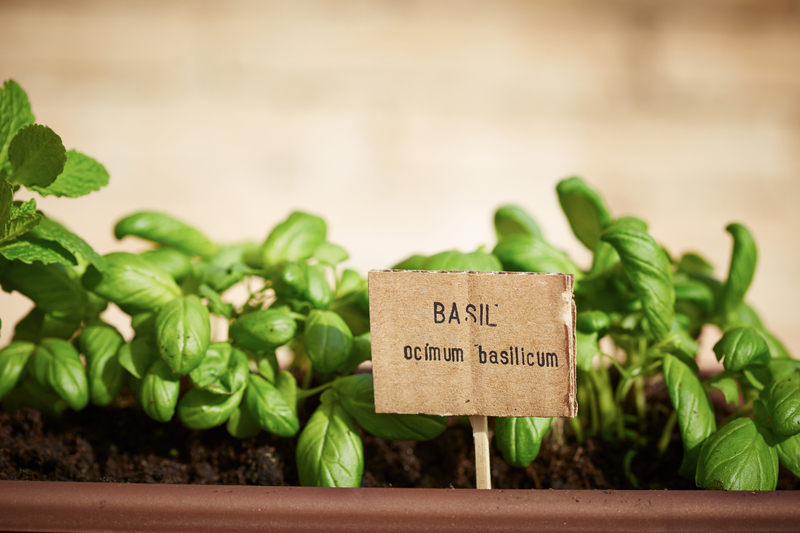Guiding Steps to a Kid-Friendly Backyard Garden
Posted on 22/06/2025
Guiding Steps to a Kid-Friendly Backyard Garden
Dreaming of a backyard garden for kids? With the right steps, you can turn any outdoor space into a fun, safe, and educational experience for children. Whether you have a sprawling yard or a compact space, a kid-friendly backyard garden encourages creativity, healthy eating, and connection with nature. This guide will walk you through the essential steps to creating a backyard oasis that keeps children engaged, safe, and happy.

Why Create a Kid-Friendly Backyard Garden?
- Hands-On Learning: Gardening offers real-life science lessons and introduces kids to plant biology, insects, and weather patterns.
- Encourages Healthy Eating: Children are more likely to eat fruits and vegetables they helped grow themselves.
- Physical Activity: Digging, planting, watering, and harvesting keeps kids active.
- Boosts Responsibility: Taking care of plants teaches kids about responsibility and routine.
- Family Bonding: Gardening is a wonderful activity for family collaboration and shared success.
Step 1: Choose the Right Location
Selecting the best spot is crucial for your child-friendly garden backyard. Consider the following:
- Sunlight: Most vegetables and flowers need 6-8 hours of sun daily. Observe your yard throughout the day.
- Visibility: Pick a place visible from the house so you can supervise the children as they play and garden.
- Safe Distance: Keep the garden away from busy streets, driveways, and any potentially hazardous areas.
- Accessibility: Make sure the area is easy for little ones to access and navigate.
Consider Raised Beds or Containers
Raised beds or large containers are ideal for a backyard garden for children. They offer better soil control, reduce weeds, and can be constructed at child-friendly heights.
Step 2: Get Kids Involved in Planning
A kid-friendly backyard garden is most successful when children have a say in its design and contents. Here's how to involve them:
- Brainstorm Ideas: Draw garden plans together, allowing kids to select their favorite plants and colors.
- Theme Gardens: Consider fun themes like "pizza garden" (tomatoes, basil, peppers), rainbow garden, butterfly garden, or fairy garden.
- Name the Garden: Give the garden a special name -- this builds a sense of ownership and excitement.
Let Kids Pick Plants
Allow your children to choose some seeds or seedlings. Fast-growing or visually rewarding plants encourage confidence and keep children's interest alive.
Step 3: Select Easy-to-Grow, Kid-Safe Plants
Ensuring plant safety is essential for a kid-safe backyard garden. Choose non-toxic, robust plants that germinate and mature quickly.
- Vegetables:
- Cherry tomatoes
- Carrots
- Radishes
- Peas
- Lettuce and salad greens
- Snap beans
- Herbs:
- Basil
- Chives
- Mint (in containers)
- Parsley
- Flowers:
- Sunflowers
- Nasturtiums (edible and colorful!)
- Marigolds
- Zinnias
_Tip:_ Always double-check plant selections via a child and pet-safe plant list, especially if you have toddlers who are likely to touch or taste everything.
Encourage Sensory Exploration
Include plants with interesting smells, textures, or colors, such as lamb's ear, silver sage, lemon balm, and bee balm. Sensory gardens stimulate curiosity and keep children engaged.
Step 4: Design for Safety, Fun, and Accessibility
Your backyard garden safe for kids should combine creative features with practical safety:
- No Harmful Chemicals: Use organic soil and natural pest control methods.
- Gentle Edges: Avoid sharp tools or raised beds with splinters; round off any edges or corners.
- Paths and Borders: Mark paths with stones or mulch for easy movement and defined spaces.
- Fencing: A low fence or border keeps pets out and discourages children from wandering.
- Shade: Provide shaded areas with umbrellas, canopies, or trees to shield from midday sun.
Create Inviting Zones
Design spaces for planting, play, and rest. Little benches or stumps make charming seating, while stepping stones add fun pathways. Consider adding a sandbox or water table for sensory play.
Step 5: Provide the Right Tools for Little Hands
Child-sized, lightweight gardening tools make the experience enjoyable and empower kids to help. Look for:
- Small hand trowels and cultivators
- Lightweight watering cans
- Kneeling pads for gentle gardening
- Sunhats and kid-friendly gloves
Teach tool safety and storage. Setting up a special storage box or hook at a child's height helps foster responsibility and care for their gardening gear.
Step 6: Incorporate Playful Features
A playful environment makes your kid-friendly backyard garden a favorite hangout. Add whimsical touches and playful elements:
- Garden Decor: Wind chimes, colorful stepping stones, or garden gnomes bring magic to the garden.
- DIY Art: Paint rocks as garden markers or decorate plant pots.
- Wildlife Attractions: Bird baths, butterfly feeders, and bee hotels introduce children to garden wildlife.
- Secret Spaces: Create a hideaway with sunflower forts, bean teepees, or tunnels made with vines.
- Music & Sound: Hang recycled instruments or bells for delightful garden sounds.
Step 7: Make Gardening a Routine Family Activity
A child-friendly garden backyard thrives when the whole family participates. Schedule regular gardening time for planting, watering, weeding, and harvesting. Celebrate milestones with garden parties or simple picnics in your green space.
- Assign Tasks: Even young children can water plants, pull weeds, or harvest small crops.
- Keep It Positive: Praise children's efforts, not just the results. Remember, messes are expected and fun.
Document Progress
Encourage children to keep a garden journal, take photos, or draw pictures of their plants. Tracking growth fosters pride and learning.
Step 8: Educate and Explore
A backyard children's garden is a live classroom. Use it to teach important life skills and ignite curiosity:
- Plant Life Cycles: Discuss seed sprouting, plant growth, flowering, and fruiting.
- Pollinators: Observe bees, butterflies, and birds, discussing their garden roles.
- Ecology & Sustainability: Show composting and water conservation in action.
- Healthy Habits: Reinforce healthy food choices with tasty garden harvests.
Outdoor Experiments
- Sprout seeds on a paper towel and watch roots develop.
- Build a worm bin to learn about soil health and decomposition.
- Create a rain gauge and record daily rainfall.
Step 9: Celebrate Harvest and Enjoy the Garden
Harvest time is the highlight of any kid-friendly backyard garden. Celebrate by:
- Trying New Recipes: Make salads, smoothies, or snacks together from your handpicked harvest.
- Sharing: Give extra produce to neighbors or a local food pantry to foster generosity and community connection.
- Crafting: Use flowers or herbs for natural crafts, bouquets, or pressed flower artwork.
Host Garden Events
Invite friends and family to taste, play, and learn in your backyard garden. Seasonal parties and picnics are a joyous way for children to share their hard work and discoveries.
Common Challenges and Solutions in a Kid-Friendly Backyard Garden
- Pests & Disease: Use safe, organic pest solutions like handpicking bugs, neem oil, and encouraging natural predators such as ladybugs.
- Short Attention Spans: Opt for fast-growing plants and quick wins to keep up excitement and interest.
- Mess & Chaos: Set up a mud kitchen, washable clothes, and easy-clean zones to embrace the inevitable mess.
- Weather Problems: Have backup indoor gardening activities for rainy days, such as seed starting or garden-themed crafts.
Smart Safety Guidelines for a Children's Backyard Garden
- Supervision: Always supervise children, especially younger kids, while gardening.
- Non-Toxic Supplies: Use safe soils, mulches, and natural fertilizers.
- Proper Clothing: Encourage hats, sunscreen, long sleeves, or gloves for sun and bug protection.
- Chemical-Free: Ban pesticides, herbicides, and non-organic fertilizers in a kids' garden.
- Stored Tools: Keep sharp tools and dangerous items out of reach when not supervised.
- Water Safety: If using a water feature or rain barrel, secure it with a lid or guard to avoid accidents.

Inspirational Ideas for a Children's Backyard Garden
- Install a chalkboard or whiteboard for drawing and learning outdoors.
- Build a bug hotel with children using recycled materials.
- Hang bright, unbreakable bird feeders or butterfly-friendly flowers to attract pollinators.
- Use recycled containers for planting -- boots, buckets, and old toys can be transformed into planters.
- Try vertical gardening if space is tight (wall-mounted planters or hanging baskets).
Conclusion: The Endless Value of a Kid-Friendly Backyard Garden
Creating a backyard garden for children is one of the most rewarding projects for families. Not only do you cultivate delicious food and beautiful flowers, but you also nurture curiosity, responsibility, and a love for the outdoors in your child. With a thoughtful approach and these guiding steps, your kid-friendly backyard garden will be a magical, safe, and educational haven season after season.
Ready to start your journey? Gather your kids, grab your seeds, and dig into the adventure of child-friendly backyard gardening!

